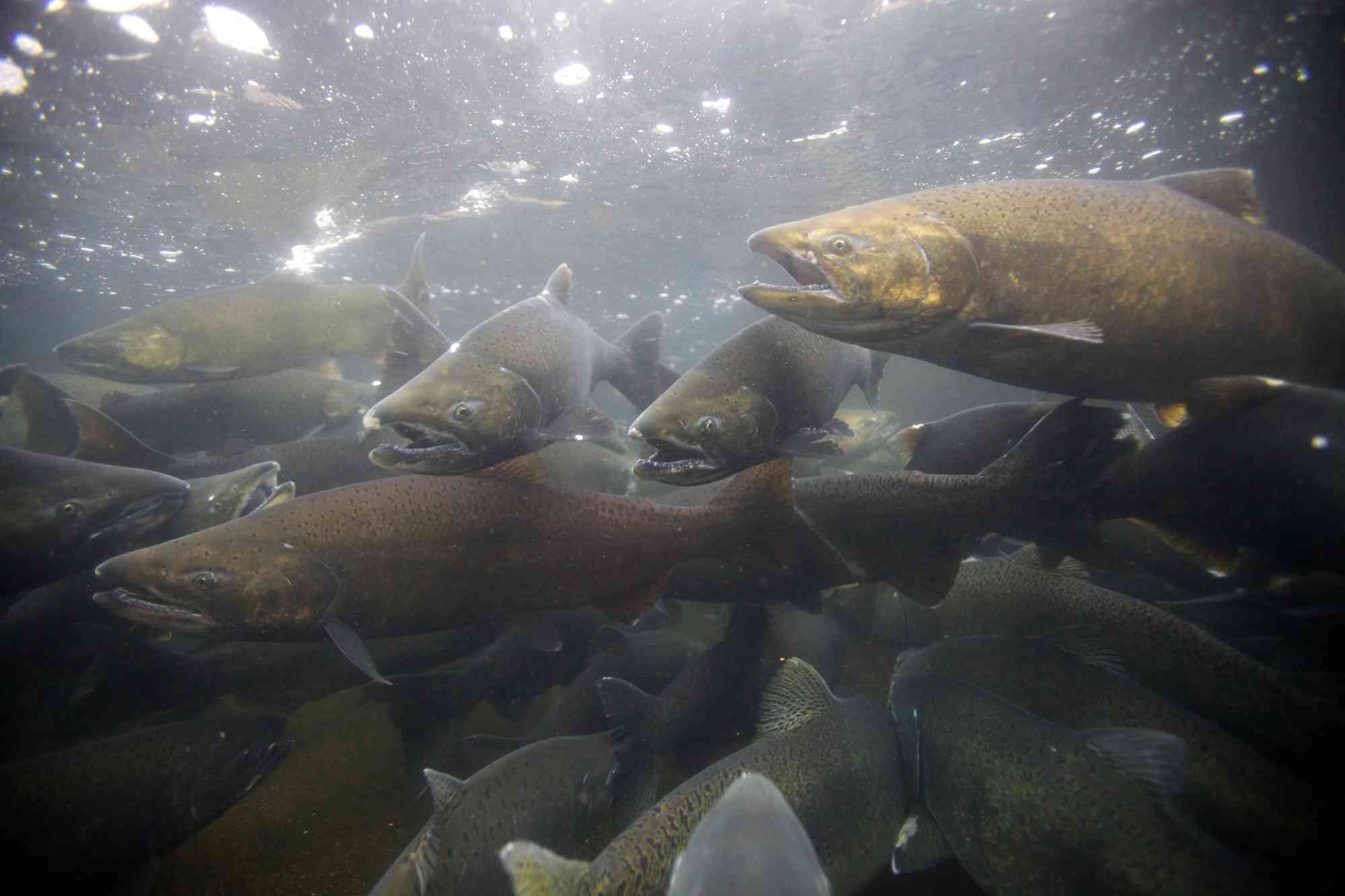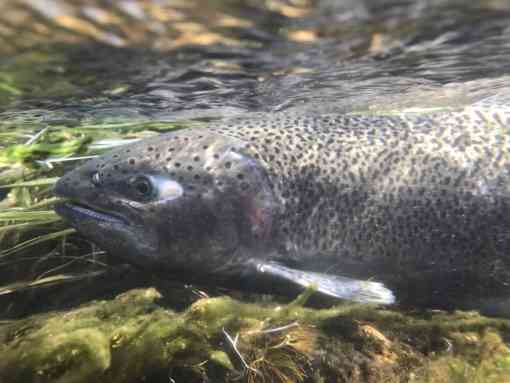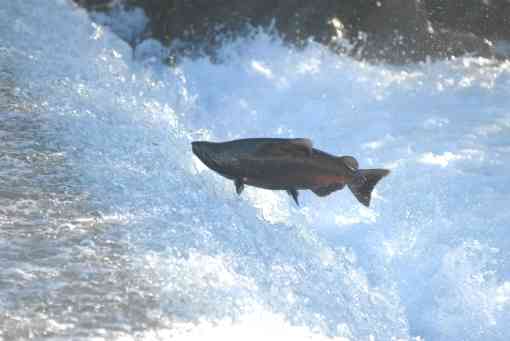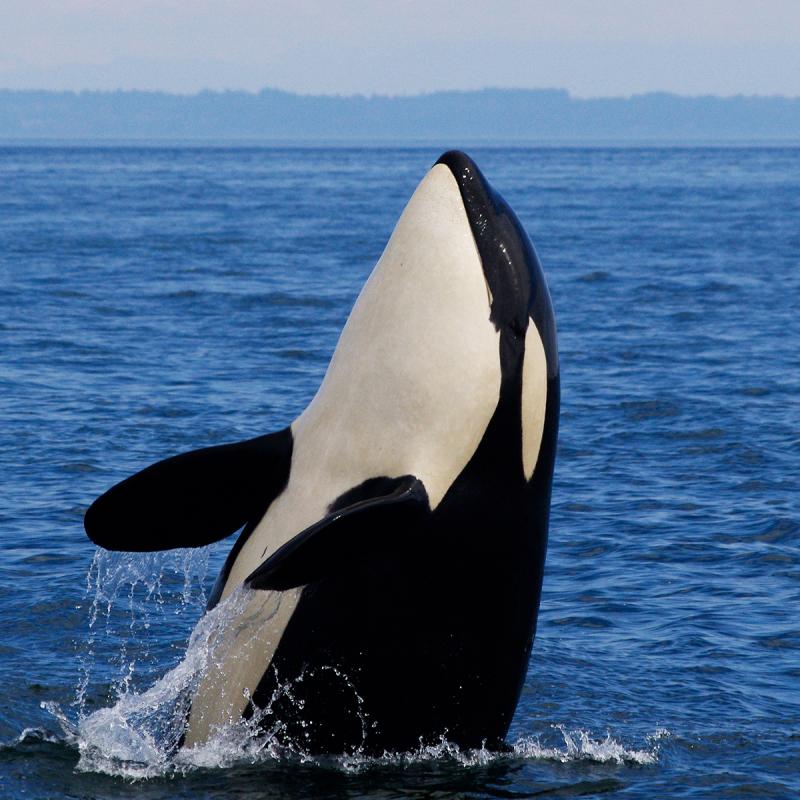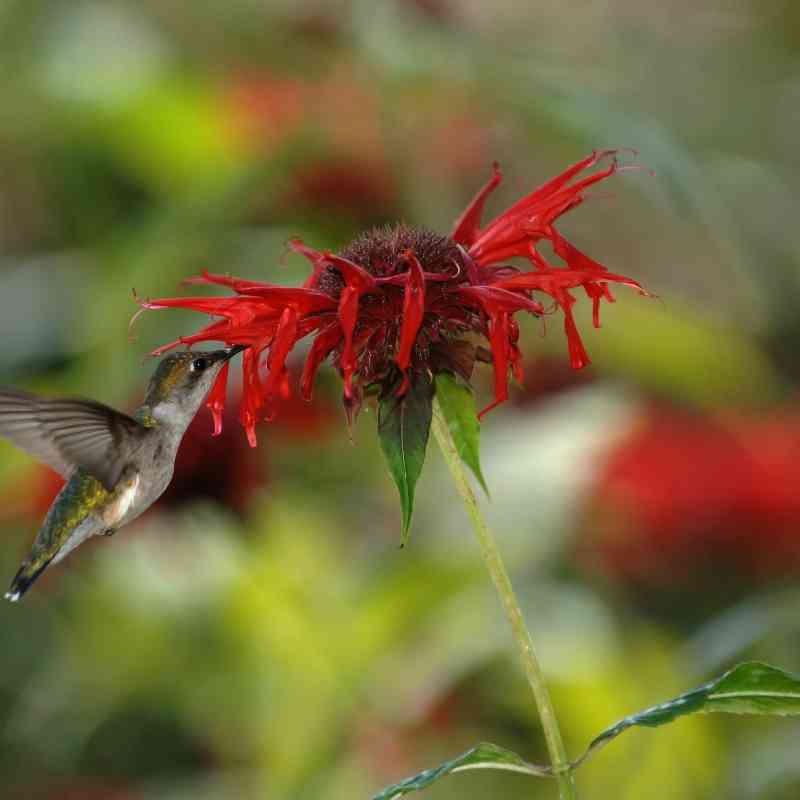This spring, two new calves are swimming with the Southern Resident orcas in the coastal waters of the Pacific Northwest. One was the first born to its pod in over ten years. With nearly 70% of Southern Resident pregnancies failing to reach term in recent years, these new babies are a source of hope for biologists and locals alike.
Meanwhile, adult Chinook salmon—the primary food of the Southern Residents—are beginning their migration from the Pacific Ocean up the Columbia and Snake Rivers to tributaries as far upstream as central Idaho and northeast Oregon. Here they will spawn, depositing eggs that will, in time, become juvenile salmon that make their way back to the ocean, completing an ecological cycle that has been in place for millennia.
Unfortunately, this critical stream-to-sea migration has been severely hindered by federal dams along the Snake and Columbia rivers, the construction of which destroyed or altered critical salmon habitat. Juvenile salmon migrating downstream now face stress, injury and death from dam passage. Delays and displacements in their migration can damage their ability to adapt to marine conditions, making them less likely to survive in the ocean. Still water in reservoirs makes them vulnerable to predation by other species and exposes them to dangerously warm temperatures. In recent years, climate change has compounded this crisis by raising river temperatures well above lethal levels for salmon.
As a result, fewer and fewer salmon survive long enough to migrate back upstream as adults. The Snake River once sustained almost 50% of the Chinook salmon and steelhead populations in the entire Columbia River Basin. Today, only 1-2% of historic wild fish populations return to the Snake River Basin, and all its salmon and steelhead populations are listed as threatened or endangered.
This is not a new story. Tribes, conservationists and other stakeholders have been involved in a decades-long effort to remove the Snake River dams, which has faced continued opposition due to the hydropower, irrigation and transport services they provide. The federal government has spent billions of dollars on numerous salmon recovery measures short of removing the dams, but to date these have failed to halt or reverse overall population decline. The scientific consensus is that the survival of ESA-listed salmon and steelhead in the Columbia basin cannot be secured without removing four federal dams on the lower Snake River. Despite this, political will has long been insufficient to deauthorize these dams in Congress and fund their physical removal.
However, this story might be changing. The past year has seen some unprecedented political shifts on the lower Snake River dams. From ID Representative Mike Simpson’s comprehensive proposal in 2021 to a more recent joint process by WA State Senator Patty Murray and Governor Jay Inslee to assess feasible replacements for dam services, momentum is building for a solution that includes dam removal.
The Affiliated Tribes of Northwest Indians (ATNI), together comprising 60 northwest Tribal governments, recently called for Congress and the Biden Administration to remove the four lower Snake River dams in recognition of their treaty obligations to ensure the Tribes’ access to abundant salmon. Meanwhile, the White House Council on Environmental Quality (CEQ) has committed to working with all involved federal agencies to identify “a durable path forward that ensures a clean energy future, supports local and regional economies, and restores ecosystem function, while honoring longstanding commitments to Tribal Nations.”
These are positive signs, suggesting that 2022 may be the year when dam removal transitions from a concept to a definitive plan. As every Defender knows, however, political will begins with constituents. Securing a salmon-abundant future for the Pacific Northwest’s orcas, people and ecosystems will require vocal support for removal of the lower Snake dams from allies across the nation.
For this reason, Defenders of Wildlife has joined other national conservation organizations in designating May 24th as a National Day of Action to Stop Salmon Extinction. Wildlife advocates from coast to coast will urge the Biden Administration and Congressional representatives to remove the four lower Snake River dams, and we invite you to join us! With enough voices, we can stop extinction and lead the largest salmon restoration in history while honoring the rights of Tribes and Indigenous people.
From stream to sea, salmon nurture us all. In addition to feeding Southern Resident orcas, their annual migrations bring critical marine nutrients such as nitrogen and phosphorous inland, where they enrich the soil that supports our agriculture and the Pacific Northwest’s rich biodiversity. Salmon are the source of a multi-billion dollar commercial and recreational fishing economy. They are a spiritual and cultural cornerstone for Northwest Tribes. As we move into Orca Action Month in June, we invite you to reflect on these vital connections and raise your voice to restore the free-flowing rivers and estuaries that are their home.
Author

Kathleen Callaghy
comments
Wildlife & Wild Places

